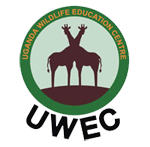Friends of Paradise Wildlife Park (FoPWP) is a registered charity (charity number: 1108609) based at Paradise Wildlife Park in Broxbourne, Hertfordshire. FoPWP is run by people with a real passion for animals who are dedicated to raising awareness for the conservation of animals both in the UK and Internationally.
To date, thanks to the effort put into fundraising by all our volunteers, those who attend our events, Paradise Wildlife Park and its visitors; FoPWP has been able to raise thousands of pounds for animal conservation charities worldwide including: Gyps Vulture Project, Wildlife Vets International, Hill Top Animal Sanctuary, 21st Century Tiger, World Land Trust through BIAZA, Save the Rhino and the EAZA Campaigns, including this year’s for European Carnivores to name but a few.
Numerous fundraising events are run throughout the year by FoPWP raising funds which are then available in the form of grants to any animal based project worldwide. A list of previous grants can be found on the PWP website on the dedicated FoPWP page.
Please help us to continue our important conservation work of raising funds and awareness for conservation efforts around the world by volunteering at one of our events, joining as a member, making a donation or coming along to one of our events.
Go to www.pwpark.com to find out more about FoPWP and Paradise Wildlife Park.
Friends of Paradise Wildlife Park
Registered Charity Number: 1108609

The Amur, or Far Eastern, leopard (Panthera pardus orientalis) is a subspecies of leopard. There are eight subspecies that range over Africa and Asia. The Amur leopard is only found in the Russian Far East and North East China, and is adapted to this cool climate by having thick fur (up to 7.5 cm long in winter), which is paler than other leopard subspecies. It also has a longer tail than other leopards. The Amur leopard’s spots are widely spaced thick black rings with dark centres.
Status: There are fewer than 45 Amur leopards left in the wild, making the Amur leopard one of the world's most endangered cat taxa. For this reason, this subspecies is listed as Critically Endangered by the IUCN, and CITES Appendix I for protection status.

Since its inception, 21st Century Tiger has funded over 67 projects, distributing over 1.6 million pounds and supported projects in seven countries - India, Indonesia, China, Malaysia, Cambodia, Thailand and Russia.The projects cover a wide spectrum of requirements for tiger conservation, including training for wildlife rangers in the application of wildlife law, jungle survival and identification of endangered species[6], support for anti-poaching units which deal directly with poachers, uncover networks of illegal trading, and even advise in cases of human-tiger conflict. In Russia and Indonesia scientific research is also funded, including studies of tiger home ranges and tiger prey densities, and of methods for limiting the habitat damage caused by economic development[7]. Comprehensive and thorough research provides a sound scientific basis for conservation planning and is an essential part of any conservation programme. 21st Century Tiger also funds education and awareness raising programmes within tiger range countries; vital for ensuring sustainable local support for wildlife conservation.
21st Century Tiger works with a range of organisations from the internationally known Wildlife Conservation Society (WCS) to small, focused local groups such as Phoenix Fund in Russia. All projects submitted for funding are rigorously examined by a panel of international experts. The projects must have sound practical scientific and conservation value and use local staff wherever possible. Regular reports of findings and work carried out are essential for both accounting purposes and knowledge sharing and can be found on the 21st Century Tiger website.

Established in 2002 by author and conservationist, Linda Tucker, the Global White Lion Protection Trust (WLT) is a South African based non-profit conservation and community development organisation.
Operating in the greater Timbavati bush region, the WLT is responsible for protecting the White Lions and developing the related cultural values that hold them sacred. In 2002, when the WLT was first established, there were no known White Lion individuals remaining in the wild in the Greater Timbavati and this had been the status for the past decade. With a critical need to supplement the White Lion gene in the wild, the WLT launched its world-first White Lion Reintroduction Program. Today (2009) the Reintroduction Progam can be considered successful as the founding pride hunts self-sufficiently and is reproducing without human intervention. The Reintroduction Program is not a breeding project and the lions are not held in captivity. Six years after its establishment, the WLT is gratified to receive occasional reports of the births of White Lion cubs in the Timbavati region (in addition to the WLT's own three cubs). This is highly significant as it confirms the conservation value of this rare phenotype in this specific region. However, we remain concerned for the survival of the White Lion gene since the last White Lion cubs to be born in the region in 2006 died shortly after their probable father was trophy hunted. According to the definition of "critically endangered", (which refers to a population of less than 250 individuals in the wild), White Lions may be considered not only "critically endangered" but on the brink of extinction in their endemic habitat.
The WLT is accountable to its Trustees and a panel of global advisors. The panel includes representatives from the South African Government, local and international conservation groupings and the South African business sector.
The WLT campaigns for the protection of the critically endangered White Lion in its endemic wild habitat in the Timbavati at both provincial and national levels and is pursuing National - and indeed World - Heritage status for the White Lion site in the region.
Wildlife Vets International is working to reverse the decline of some of the world's most endangered animals.
Our mission is to apply specialist veterinary expertise to saving rare and endangered wildlife.
- Tiger conflict resolution: To supply a full time vet to Bangladesh for staff training and to set up a unique tiger disease prevention programme.
- Amur leopard health: To continue our annual trapping and health monitoring of the wild Amur Leopard population, and to plan and implement future leopard release projects.
- Support for Painted Dogs: To provide more training while in the field, and to supply more equipment for the Painted Dog Conservation Veterinary Clinic.
- Primate rehabilitation facility, Nigeria: To supply equipment and training for a new quarantine facility providing disease management and screening, and other procedures.
- Wildlife Medicine Training, Seychelles: Investigating the needs for wildlife medicine with the Seychelles Agriculture Agency and Nature Seychelles.
All of our work relies on charitable giving.
Please make a donation (don't forget to Gift Aid if you're a UK taxpayer).

The Uganda Wildlife Education Centre (UWEC) was opened in 1952 by the colonial government as a reception center for wild animals that were found as casualties (sick, injured, orphaned or/and confiscated from illegal trade). In the early 1960s, it changed its role to a traditional zoo and became commonly known as Entebbe Zoo, in which even non-indigenous species like bears and tigers were kept as an attraction.
However, as a result of political turmoil in the 70’s and inadequate government funding, the zoo experienced serious breakdown of infrastructure and loss of valuable animals. It continued run down until May 1994, when the government of Uganda recognized the need to set up an institution that would provide leadership in educating Ugandans about the benefits of conserving the country’s biodiversity, one of the kingpins of the recovery process that the country was going through, as a benefit to tourism, the second highest contributor to the national Gross Domestic Product (GDP).
UWEC was thus born and has since grown to be one of the most respected conservation education institutions in Africa and beyondfor successfully carrying out its mandates to educate Ugandans on the importance of conserving the country’s biodiversity, to rescue and rehabilitate injured, orphaned and/or confiscated wildlife and to breed endangered wildlife species in captivity with an aim of re-introducing them back in the wild.
UWEC is now recognized as a true success story and model institution for others to follow. It has been a long and troublesome journey but we are glad that every step has brought us to where we are now and there is no turning back!
Wildlife Heritage Foundation – W H F is a UK based charity working hard to ensure that the big cat species of the world are protected from extinction. Based in Kent UK we are an active partner in the European Endangered Species Breeding Programmes (EEP), as well as setting up education programmes for the people that share the habitats of these wonderful cats. The WHF is also raising awareness and funding for big cat projects around the world.
The Big Cat Sanctuary allows the WHF to breed a collection of big cats in conjunction with the European Rare Species Breeding Program. We are aiming to increase the generic diversity of cats with a view to reintroduction to the wild.
Currently we have been very successful with the Amur Leopard and the Sumatran Tiger.
We offer a range of experiences to the public including Ranger Days, Big Cat Encounters and Photography Days
Wildlife Heritage Foundation (WHF) has already committed to work for the protection of the Amur Leopard, found in the Russian Far East. Only 30 individuals are thought to survive in the wild.
Through support to charities and non-governmental organisations working in the field, WHF is helping ensure these rare cats do not decrease further in numbers. Given the very low wild population, protection of this species by captive breeding is vital whilst the details of a programme of re-introductions is established and importantly fully funded.
At our Kent centre we hold animals from the European Endangered Species Programme (EEP), which is a European wide zoo based project to maintain genetically sound animals for possible future return to their home range area. We will establish at least one Amur Leopard breeding pair at our centre as part of our contribution to the EEP.
We have co-operated with Novosibirsk Zoo in the Russian Federation in order that male leopards bred at their zoo are available to UK breeding centres.
With our colleagues at Paradise Wildlife Park (Hertfordshire, UK) we are supporting efforts in Africa to protect diminishing wild lion populations from diseases associated with the ever-increasing human population of that region. By funding vaccine programmes for domestic dogs we are helping reduce the incidents of canine distemper virus in the lion population. Current estimates are that the total African lion population may have been reduced to around 16,000 animals — a matter so serious that it has been suggested this animal should be accorded the highest level of legal protection at a series of international meetings in late 2004.






